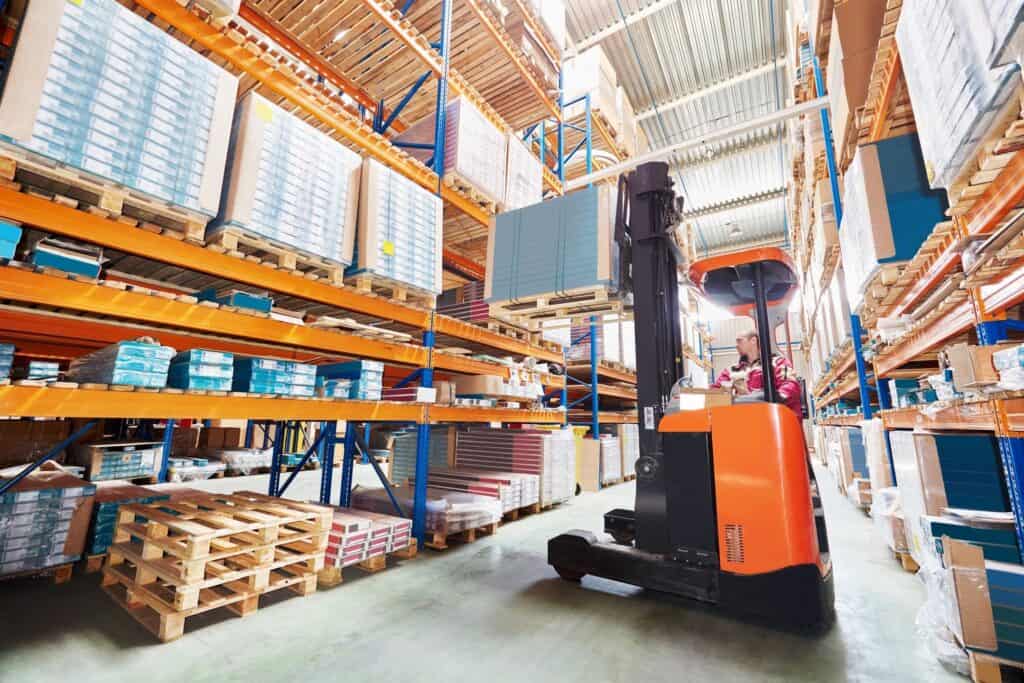In the dynamic landscape of warehouse management, where every inch of space and every second of time matters, the choice of storage solutions becomes a critical factor in determining the overall efficiency of operations. Among the myriad options available, warehouse pallet racks emerge as silent architects, sculpting the very foundation of an organized, efficient, and future-ready warehouse.
The Core Components: Delving Deeper into Warehouse Pallet Racks
Warehouse pallet racks, often viewed as simple shelving structures, are in fact, sophisticated systems designed with meticulous precision. Understanding the core components and their interplay is crucial to harnessing the full potential of these systems.
Upright Frames: The Pillars of Support
Upright frames are the vertical pillars that provide structural support to the entire pallet rack system. They are not one-size-fits-all; their height is a critical consideration. The selection of the right frame height is determined by the vertical space of the warehouse and the reach of the forklifts used for loading and unloading.
Horizontal Beams: Connecting for Stability
Horizontal beams serve as the connecting elements between upright frames, creating the shelving levels. The length and weight-bearing capacity of these beams are integral to the system’s stability and efficiency. It’s a delicate balance; the beams must be sturdy enough to support heavy loads but flexible enough to allow for easy adjustments.
Wire Decking: Stability and Safety
Placed on the horizontal beams, wire decking acts as a surface for pallets to rest on. It enhances safety by preventing items from falling through, ensuring stability, especially for pallets stored at higher levels. Additionally, it facilitates better visibility and air circulation.

Types of Warehouse Pallet Racks: Tailoring Solutions to Unique Needs
The effectiveness of warehouse pallet racks lies in their adaptability to diverse storage requirements. Understanding the different types of pallet racks allows warehouse managers to tailor their storage solutions to the unique needs of their inventory.
1. Selective Pallet Racks: Direct Access Efficiency
Selective pallet racks are the workhorses of many warehouses. They provide direct access to each pallet, making them ideal for facilities with a diverse range of products. This design facilitates easy retrieval of individual pallets, enhancing efficiency in handling different SKUs.
2. Drive-In Pallet Racks: Maximizing Storage Density
In situations where storage density takes precedence over immediate access, drive-in pallet racks shine. By eliminating aisles, they maximize storage density, making them suitable for a large quantity of the same product with low turnover. This design is particularly effective in cold storage applications.
3. Push-Back Pallet Racks: High-Density Storage
For those seeking high-density storage with multiple pallets deep, push-back pallet racks offer a compelling solution. They utilize a gravity-fed system that allows pallets to be automatically retrieved when one is removed. This dynamic storage system is particularly useful for products with varying expiration dates.
4. Pallet Flow Racks: FIFO Inventory Management
Pallet flow racks operate on the principle of first-in, first-out (FIFO) inventory management. Ideal for perishable goods or items with expiration dates, these racks ensure that the oldest stock is used first. They are often employed in environments where stock rotation is critical.
5. Cantilever Racks: Tailored for Bulky Items
When it comes to storing long or bulky items such as lumber, pipes, or furniture, cantilever racks step into the spotlight. Their design, featuring arms that extend from the supporting uprights, provides unobstructed storage for items of varying lengths.
Advantages of Implementing Warehouse Pallet Racks
The decision to invest in warehouse pallet racks extends beyond mere storage considerations; it’s a strategic move with far-reaching advantages. Let’s explore the key benefits that make pallet racks indispensable in the quest for an efficient warehouse.
1. Maximized Space Utilization: Vertical Efficiency
The vertical storage design of pallet racks allows warehouses to maximize space utilization. By utilizing the height of the facility, these racks create additional storage capacity without expanding the physical footprint.
2. Improved Accessibility: Selective Pallet Racks in Action
Selective pallet racks, with their direct access design, contribute to improved accessibility. Warehouse staff can quickly and efficiently retrieve individual pallets without the need to move others, reducing retrieval times and increasing overall productivity.
3. Enhanced Organization: Streamlining Inventory Management
Categorizing items on pallet racks significantly improves inventory management. With a designated space for each SKU, warehouse staff can easily locate, pick, and replenish items. This systematic organization minimizes errors and reduces the time and effort required to manage inventory.
4. Increased Safety: Wire Decking’s Role
The inclusion of wire decking enhances safety within the warehouse. By providing a stable surface for pallets to rest on, it prevents items from falling through, mitigating the risk of accidents. Additionally, the improved visibility through wire decking contributes to a safer working environment.
5. Versatility in Design: Customizing for Specific Needs
The variety of pallet rack types offers a high degree of versatility. Warehouses can customize their storage solutions based on the specific needs of the stored items. From long, bulky items to products with varying turnover rates, there’s a pallet rack type tailored for every requirement.
Choosing the Right Warehouse Pallet Rack System
Selecting the most suitable warehouse pallet rack system is a nuanced process that involves a detailed evaluation of various factors. Warehouse managers must carefully consider the nature of stored items, the facility’s layout, and operational requirements to make an informed decision.
Weight and Dimensions of Products: Structural Integrity
The weight and dimensions of the stored products play a pivotal role in determining the suitable pallet rack system. It’s crucial to choose a system that can handle the specific weight requirements and accommodate the dimensions of the items.
Inventory Turnover: Matching with Operational Needs
The turnover rate of inventory influences the choice of pallet rack type. For warehouses with high inventory turnover, selective pallet racks are often more suitable as they provide quick and direct access to frequently needed items. Conversely, for facilities with slower turnover, high-density systems like drive-in or push-back racks may be more appropriate.
Storage Density: Tailoring to Inventory Characteristics
Understanding the storage density requirements is essential. Warehouses dealing with a large volume of similar products may benefit from high-density systems like drive-in or push-back racks. These systems maximize storage capacity by utilizing depth rather than focusing on immediate accessibility.
Future Trends in Warehouse Pallet Rack Systems
As technology continues to advance, warehouse pallet rack systems are not immune to innovation. Emerging trends are shaping the future of these systems, introducing features that enhance efficiency, automation, and sustainability.
1. Automation Integration: The Rise of Smart Warehousing
The integration of warehouse pallet rack systems with automated technologies is a notable trend. Automated storage and retrieval systems (AS/RS) are becoming more prevalent, reducing reliance on manual labor and increasing overall efficiency. These systems use robotics and conveyors to automate the movement of pallets within the warehouse, optimizing storage and retrieval processes.
2. IoT and Smart Warehousing: Real-time Monitoring
The implementation of Internet of Things (IoT) devices within pallet rack systems allows for real-time monitoring of inventory and conditions. Sensors and RFID tags provide data on factors like temperature, humidity, and stock levels. This real-time data empowers warehouse managers to make informed decisions, enhancing operational efficiency.
3. Sustainability Measures: Eco-friendly Warehousing
Sustainability is gaining prominence in all facets of business, including warehouse management. Manufacturers are increasingly incorporating sustainable materials and designs into pallet rack systems. Eco-friendly coatings, recyclable materials, and energy-efficient manufacturing processes are becoming integral parts of the design and production of these systems.
Best Practices for Warehouse Pallet Rack Maintenance
Ensuring the longevity and optimal performance of warehouse pallet racks necessitate adherence to best maintenance practices. Regular inspections, proactive cleaning, and addressing any signs of wear and tear are essential steps in prolonging the lifespan of the system.
Regular Inspections: Preventive Measures
Implementing a routine inspection schedule is crucial. Regular inspections help identify any signs of damage, misalignment, or wear and tear. Warehouse staff should inspect upright frames, horizontal beams, and wire decking for any issues that could compromise structural integrity.
Cleaning and Debris Removal: Proactive Measures
Regular cleaning is more than aesthetics; it’s a proactive maintenance measure. Dust, debris, and other contaminants can accumulate on horizontal beams and wire decking, impacting both safety and system stability. Periodic cleaning, along with debris removal, ensures that the pallet rack system functions optimally.
Addressing Wear and Tear: Timely Repairs
Any signs of wear and tear should be promptly addressed. Damaged or bent beams, rust on metal components, or warped wire decking can compromise the safety and efficiency of the system. Timely repairs or replacements are essential to maintain the structural integrity of the pallet rack system.
In Conclusion: Elevating Warehousing to New Heights
In the dynamic landscape of warehouse management, the strategic selection and implementation of warehouse pallet racks are more than structural decisions; they are integral to elevating the efficiency, safety, and organization of a warehouse. Pallet racks, with their ability to optimize vertical space, enhance accessibility, and future-proof warehouse operations, emerge as indispensable tools in the hands of modern logistics.
Whether it’s the systematic organization enabled by selective pallet racks, the high-density storage facilitated by drive-in or push-back racks, or the specialized storage of long items with cantilever racks, each type serves a unique purpose. The impact of pallet racks on overall warehouse management cannot be overstated. They are the silent architects of an organized, efficient, and future-ready warehouse.
